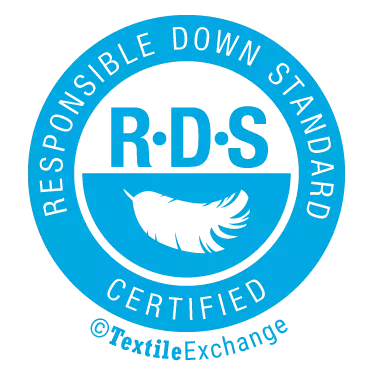When you begin looking into gear for thru-hiking, you quickly realize warmth is a core concern, both when sleeping, when moving, and when you stop for breaks.
A thru-hiker needs to find the perfect balance of weight, warmth, and compressibility when selecting what insulation to bring on their journey, and for many, that means bringing a high-quality down jacket. But what is a down jacket?
Down jackets are made with the soft feathers of ducks or geese and provide an incredible warmth-to-weight ratio. They are carried to manage cold conditions as an outer layer or mid-layer under a waterproof shell. A key to down is that it can be compressed into a small size, making it ideal for hikers who need to save space in their pack.
Now that we understand what they are and their primary purpose, we can look more into the right option for your thru-hike. Some trails have different needs, and what works on one may not work as well on another.
What Is a Down Jacket?
Down insulated jackets, or as others may call them, puff or puffer jackets, work by containing down, typically duck or goose down, in air pockets and baffles in the fabric to create extra warmth.
The down feathers give the jacket its loft, which provides the insulation and level of warmth we all associate with down puffy jackets.
The Key Insulation Metric: Understanding Down Fill Power
Finding a high fill power rating is the key to a quality down jacket.
Fill power measures how much space an ounce of down will take up in cubic inches when allowed to expand to its full potential.
Higher fill power ratings mean the down will take up more space, providing more warmth with less overall down weight and associated bulk.
Most down jackets will come with a fill power between 550-850. For what it’s worth, 800+ is considered excellent, 700-799 is very good, and 650-699 is good. Anything below 650 is not worth your time.
Duck vs Goose: The Differences Between Down Types
There are two types of down that you will find in jackets: duck down and goose down. Geese feathers are the better option because they have a higher fill power rating than duck down.
It’s also more expensive but will last longer and provide more warmth.
Duck down is what you will find in most budget jackets and what I recommend for the thrifty approach to thru-hiking gear. It’s more durable than goose down, meaning it can withstand more abuse and is less expensive.
This durability is important when you are on a long hike and don’t want to be looking at the need to replace gear mid-trail.
Hydrophobic Down vs. Regular Down
Within each type of down, there is also the choice of regular untreated down and hydrophobic down.
Hydrophobic down has been treated to make it water resistant to help manage moisture, meaning it will still insulate when wet, something regular down cannot do.
This treatment adds weight and bulk to the jacket, but for many thru-hikers, the extra ounces are worth the peace of mind, knowing their insulation won’t let them down when they need it the most.
On jackets, you may also see this as “DWR” or Durable Water Repellent.
Ethical Sourcing: What to Look for in Certified Down

This means that the down inside the jacket can be traced back to the animal it came from and that the animal was not live-plucked or force-fed.
There are a few different certifications for down, but the most common you will see are DownTek and Responsible Down Standard (RDS).
Either of these certifications will ensure that the down inside your jacket is ethically sourced.
Smart Construction for Maximum Warmth
With lightweight jackets, the holes matter to create extreme warmth. You don’t want to bleed heat out from construction. You want the cold weather kept out while maintaining as much range of motion as possible.
Let’s discuss why the different materials, methods to create baffles, and cinch cords and pockets can help you or make the jacket less comfortable for extended periods of wearing.
Sewn Through
When baffles are sewn through, you have tens of thousands of microscopic holes, all allowing heat to escape, which is common in budget jackets.
The good news is that this amount of stitching reinforces what would be a weak spot if not for the stitching. This could tear easily.
The bad news is that the heat loss can add up quickly, leaving you feeling cold even when your down jacket is fully lofted.
To avoid the cold spots, you will want to look for “box-baffled” construction.
Box Baffle
With a box baffle down jacket, no stitches go through the entire baffle from top to bottom. Instead, the baffles are sewn around the edges with an internal wall or “box” in the middle.
This design provides more loft space for the down to fill, meaning more warmth with less weight. It also eliminates cold spots because there are no holes for heat to escape.
If you see a down jacket advertising “sewn-through baffles,” I tend to move on.
Bonded Baffle
Bonded baffles are another way to avoid cold spots and heat loss. The baffles are glued or fused together instead of sewn in this construction method.
This eliminates the need for any stitching that could create holes for heat to bleed out. It also makes the jacket more waterproof since there are no needle holes for water to seep through.
Outer Fabric Material
The outer material helps provide extra protection to the down and can also add extra warmth. The most common material used for jackets on trails is ripstop nylon, which is a good mix of durability and cost.
Ripstop nylon is a lightweight and durable fabric often used in budget jackets. It is not as wind or water-resistant as some other materials, but it is less expensive and still protects the down.
Pockets
Depending on the jacket, they will or won’t have a wide array of pocket options, from no pocket to zippered hand pockets, chest pockets, and even internal pockets.
The most important thing to remember is that if the jacket doesn’t have a way to cinch down with some cinch cord, you will likely get cold air seeping in through the bottom.
Hood Drawcords and Elastic
Like pockets, the hood needs to have some cinch cord or elastic to keep the cold air from coming in.
A well-designed hood will also have some brim or bill to keep the rain and snow off your face.
Hem Drawcords
This is one of the most essential features of a down jacket; what good is all that warmth if cold air can just come up through the bottom and steal that substantial heat?
A good drawcord will be adjustable so you can cinch it down tight and keep the warmth in, and some even have a hem cinch cord lock to keep it from coming undone.
The Featherweight Warmth Advantage of Down
Most will choose down due to the lighter general weight and the packability they offer. Compressing the jacket to a much smaller size is critical when trying to save space in your backpack.
However, what sets it apart is the warmth-to-weight ratio. Down can trap more heat per ounce than synthetic insulation, making it the clear choice for those looking to save weight without sacrificing warmth.
The only downside to choosing a down jacket is that it fails to insulate when wet, so if you are hiking in an area where rain or consistent humidity is expected, you might want to consider a synthetic jacket instead.
How Down and Synthetic Compare for Insulation
The main difference between down and synthetic insulation is that down feathers are natural, while synthetic fibers are man-made.
Down is made from the soft inner plumage of ducks or geese and has been used for centuries in everything from sleeping bags to winter clothing.
The main advantages of down feathers are that they’re lightweight, compressible, and very efficient at trapping heat.
Down does have some drawbacks, however, such as being more expensive, not insulating when wet, and losing loft over time.
On the other hand, synthetic insulation is made from man-made fibers such as polyester.
The main advantages of synthetic insulation are that it’s cheaper, retains warmth when wet, and is easier to care for than down.
The main drawbacks of synthetic insulation are that it’s heavier, not as compressible, and not as efficient at trapping heat as a similar down gear.
Choosing the Right Option For Your Thru-hike
Some trails have different needs, and what works on one may not work well on another. When you are looking for a down jacket to take on your thru-hike, it is important to consider what temperature range along with relative moisture you will encounter.
The bottom line is that if you are on a budget, I recommend a lower fill power duck down, and if cost is not as much of an issue or weight reigns supreme, I would suggest goose down.
If you think you will be in more humid or wet conditions, I recommend looking for a jacket with hydrophobic down or very much suggest thinking about purchasing a quality synthetic jacket.
Our Choice of Down Jackets
Now that we know more about what a standard down jacket is, what to look for, and the different types of down available we can start looking into what might be the best option for you.
As I mentioned before, there are loads of gear companies that will state theirs are the best choice for you but it will come from understanding what you need and where you will be.
If weight is the biggest concern along with packability, then the winner would be the Zpacks Goose Down Jacket. If a synthetic counterpart is required then the Enlightened Equipment Torrid may be a better fit for you.
Otherwise, check out my choice of best down puffy jackets here.
Final Thoughts on Down Jackets
There are a lot of factors that go into what makes a down jacket warm, and what makes one warmer than another.
The three main things to look for are fill power, loft, and baffling. Fill power measures how much space one ounce of down can fill in cubic inches, the loft is the thickness of the down, and baffling is the stitching that holds the down in place.
The higher the fill power, the more loft, and the better the baffling, the warmer the jacket.
When choosing a down jacket for your thru-hike, it is essential to consider what temperature range you will be hiking in and what relative humidity you will encounter.
If you think you will be in more humid or wet conditions, I recommend looking for a jacket with hydrophobic down or very much suggest thinking about purchasing a quality synthetic jacket.
I hope this article has helped you understand what a down jacket is, what to look for when purchasing one, and what our choices are for the best down jackets for thru-hiking.
Happy Trails!


Leave a Comment